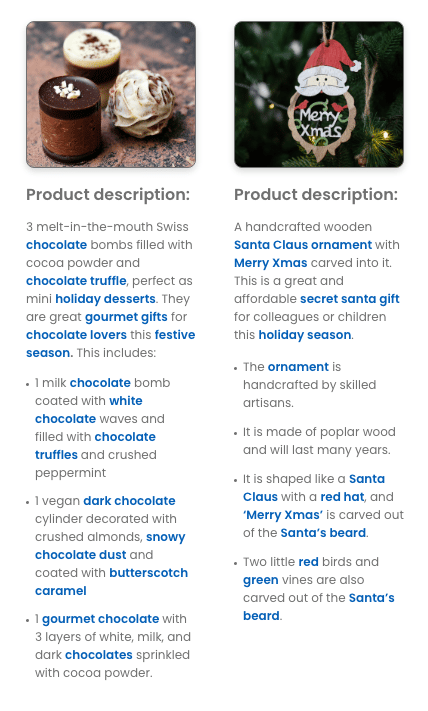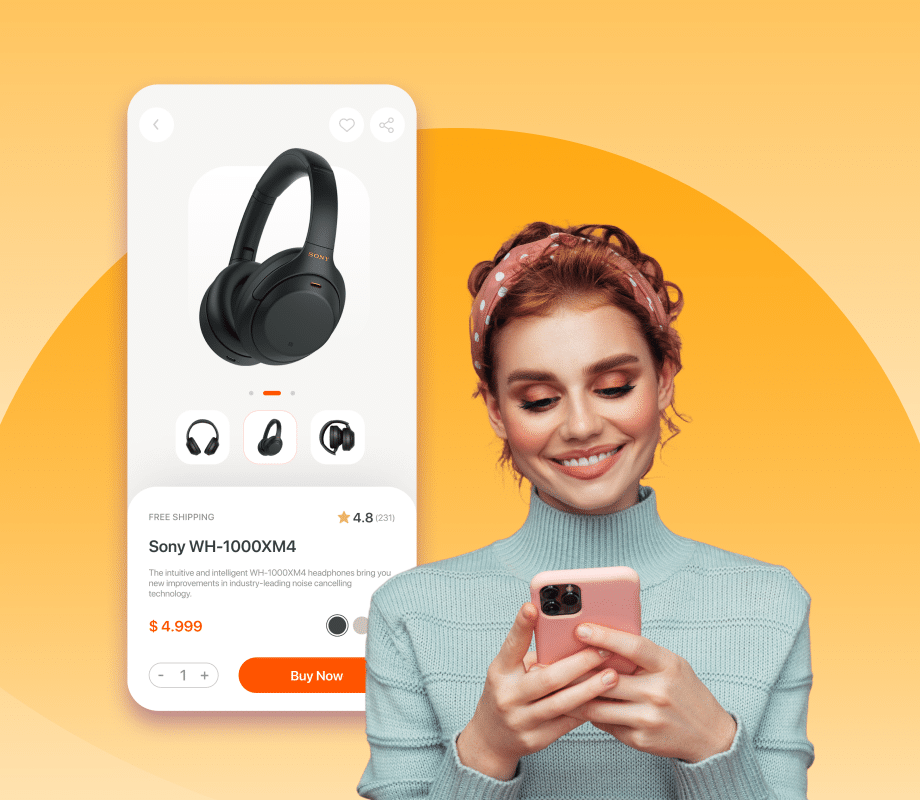As an eCommerce brand, many of the items in your inventory might be the kind that fly off the virtual shelves in minutes and have to be constantly replenished. There might also be some products that remain undiscovered by users for several reasons, such as the product is new, niche, or seasonal. For such cases, users need a little help with their product discovery.
New products most likely get ignored by your personalization engine. This is because personalization platforms typically start recommending a product only after it has gathered enough behavioral data around it, such as pageviews, click-throughs, add-to-carts, purchases, etc.
Without such behavioral data, these new or seasonal products remain buried on your site. This scenario also applies to long-tail products—items that are niche, have limited stock, or are not commonly searched for or bought by customers.
The traditional approach is to manually add merchandising rules to boost them to the top of search results pages, category pages, or homepage. However, this approach isn’t scalable.
Why Rule-based Inventory Visibility Isn’t Ideal
If you’re using merchandising rules to promote visibility for new products, some of the problems you’ll have to contend with are:
-
If you have a site where new SKUs are constantly being added, manual updating is a tedious task.
-
Time is of the essence for certain products that are seasonal or holiday based. This means your teams will not get enough time to manually create rules for every single new product on the site.
-
You also have to remember to turn off the rules when the products start appearing in search results organically or when the season for those products is over.
-
The boosted products could show up in irrelevant search queries. Worse, they could inundate a page and bury the relevant results. Both these scenarios will frustrate at least two out of your five customers and drive them away from your brand.
Altogether, the manual merchandising rules approach puts pressure on your resources and wastes time and money that can be used more productively elsewhere. So, replace this manual and tedious job with an AI-powered personalization engine.
How NLP Improves Visibility for New and Long-tail Products
Natural Language Processing (NLP) is a deep learning algorithm that processes text data to understand the meaning of the words as a human would, instead of employing the old-fashioned keyword-matching technique.
In the context of personalization, NLPs read through texts related to the product, such as descriptions and customer reviews, extracts associated attributes and text vectors, and forms associations between products based on feature complements and semantic similarity.
Here’s an example. Say a home décor store has added 300 new Christmas-related products to their inventory. They switch on the NLP strategies on their AI-powered personalization platform, and the platform analyzes text data about these products in a matter of minutes. See the adjacent image for an example of how text is analyzed and word associations are formed.
Though these products do not contain the obvious word “Christmas”, NLP associates words such as red, green, holiday, snowy, festive, merry, Xmas, Santa Claus, secret Santa, chocolate, gift, and desserts with the holiday.

So, the products shown above will also surface in results for a variety of search queries, such as Christmas gifts, Christmas décor, holiday gifts, holiday décor, and festive décor.
And once they become visible and users interact with the product, the platform has the behavioral data necessary to organically recommend them, which means that NLP also becomes a “trainer” for other personalization strategies.
In addition, NLP can also re-rank products in real time during the same user’s session, based on whether the person views such products or not.
All this ensures that new and long-tail products are personalized, users see relevant cross-sell offers from the start, and product recommendations become more relevant as users move through the purchase funnel.
Case Study
Read how Finnish e-store giant Verkkokauppa.com drives 1:1 personalization across search, browse, content & recommendations using the Algonomy Personalization Suite and its NLP capabilities.

Time to Get an NLP-based Recommendation Platform
The Algonomy DeepRecs™ platform leverages NLP algorithms to make the right product recommendations. Because of the retail expertise already “learned” by our Xen AI by working with dozens of customers, DeepRecs™ is already production-ready and scalable with several NLP word vectors and semantic knowledge that you can bank on.
The platform can use your data to create custom models for your products, factoring in actual co-purchase behavior. It ensures that new, seasonal, and long-tail products are recommended at the right time—for search queries as well as for recommendations of content, similar products, cross-sell, and upsell.
Get a demo to see how your business can benefit from DeepRecs NLP.
 in Sweden from 7 - 8 October 2025. Pre-book a meeting to connect with our
product experts.
in Sweden from 7 - 8 October 2025. Pre-book a meeting to connect with our
product experts.










